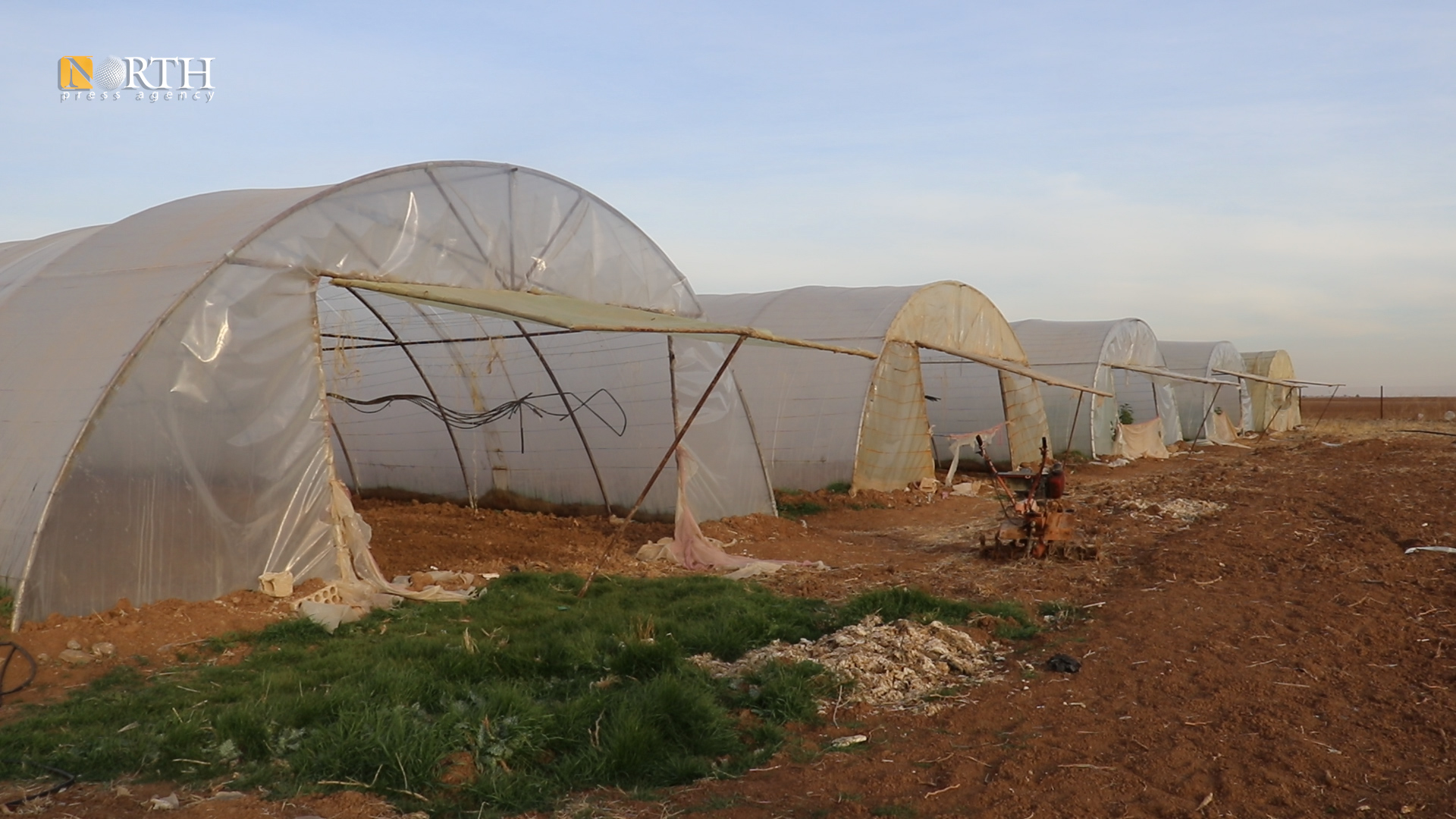JIL AGHA, Syria (North Press) – An expatriate-financed greenhouse project in the countryside of Jil Agha, northeastern Syria, continues to supply the market with vegetable products.
The project manager says that the aim of the project is to provide local products amid this hard living situation.
Hussein Hajo, Nergiz Greenhouse project owner and a resident of Aabra village, started the project three years ago, which he said that it succeeded as a pioneering experiment in the region.
He told North Press that he had received support from his European-based brother. “I started the project three years ago. It was my brother’s idea; now he is in Europe.”
First of its kind
He added that the project includes planting many vegetables such as tomatoes, eggplant, zucchini, mulukhiyah, and others, for spring and summer.
The project consists of five greenhouses, eight meters wide and 50 meters long, irrigated by the drip irrigation method. The project owners follow a heating system that maintains a temperature of 25 degrees Celsius, through burners that maintain the temperature to avoid the effects of frost waves.
The location of the greenhouses is changed every season within an area of 25 dunums of land, which the owner cultivates with wheat and vegetables alternately.
Obstacles and difficulties
Hajo hopes to expand his project, but he complains about the high cost of constructing houses and the prices of seeds brought in from coastal Tartous. “The project is costly, especially after the rise in the dollar exchange rate. Three years ago the dollar exchange rate was 600 Syrian pounds, so what do you think after the rise in the dollar exchange to 2900 SYP?” he asked.
Hajo also faces power cuts and poor quality of the fuel used to operate the generators and burners, which cause additional costs.
Economists believe that small projects can activate the economic and social development for the benefit of the population.
However, starting a large number of small projects requires financial support, and this is the obstacle that Nergiz project has overcome through the expatriate who support of the project.
Studied plans
The area allocated for the construction of the greenhouse is prepared by exposing the soil to the sun and ventilating it for about 15 days to extend the drip networks to each other and placing a fungicide until the land is ready for cultivation.
Muhammad Muhaimid, a resident of Jil Agha and the project supervisor, said that they are adopting studied plans for organic fertilization, irrigation and pest control.
“I worked in greenhouses for more than ten years in the coastal areas, then I came here to work on the same project. At first I thought the project wouldn’t work here, but it worked here and was more successful than the coastal region,” Muhaimid added.
“We meet the needs of locals, then sold the rest in Qamishli city,” he said.

